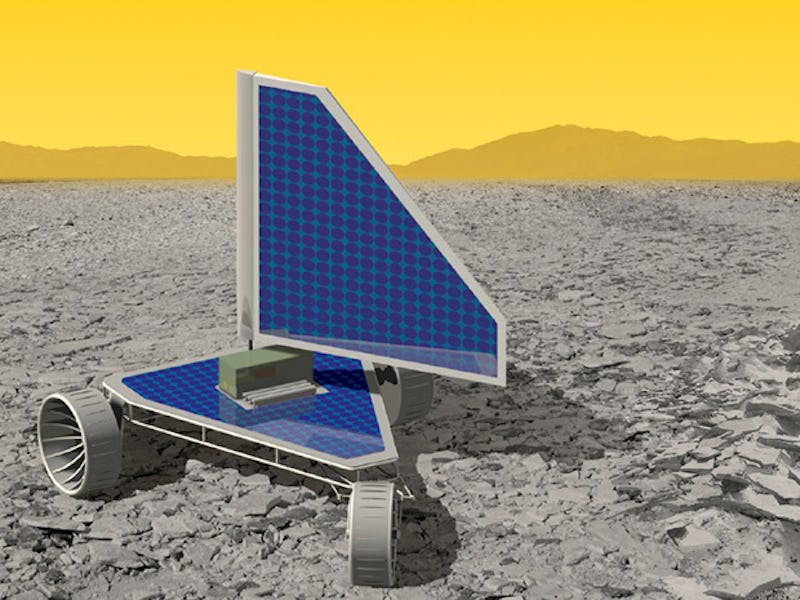The Venus Rover Is a Solar Sailboat
And you thought summers were brutal in your neighborhood...

Mars and Pluto are the planets (well, planet and dwarf planet) hogging all the love right now, but it’s important there’s still a shit-ton of space to explore. And NASA is setting its sights on sending a rover in a different direction, toward Venus.
There are just two big hurdles in trying to investigate the Evening Star’s surface — the enormous pressures (over 90 times that of Earth’s), and the extremely high temperatures (close to 500 degrees Celsius, making it the hottest planet in the Solar System). Something as delicate as Curiosity can’t handle these kinds of conditions. You’ll need something that’s parts and instruments are tough and hardened.
So NASA is giving $245,000 to an Arkansas startup to develop heat- and pressure-resistant microchips that could be used for building and operating a rover for Venus.
The company, Ozark Integrated Circuits, has already created a chip that can withstand 350 degrees Celsius. Ozark wants to try using a silicon carbide substrate combined with a proprietary substance that yields something that can handle hotter temperatures.
An image of Venus from the Magellan spacecraft
The chips would be a part of NASA’s proposed Venus Landsailing Rover, which would use Venus’ high-density winds to push the vehicle forward, and potentially use balloons to float over obstacles and rough terrain. Such a rover would still need an effective cooling system that wouldn’t sap the rover of all its energy. An option might be a Stirling engine that basically converts heat into mechanical energy.
If Ozark’s tests prove successful, they will mark a tremendous step forward to getting an actual rover prepped for studying Venus. So far, the best data we’ve been able to gather was the Soviet Union’s Venera 14 probe, which landed on Venus on a hot October day in 1981 and survived for 57 minutes before succumbing to the heat. Poor little guy.